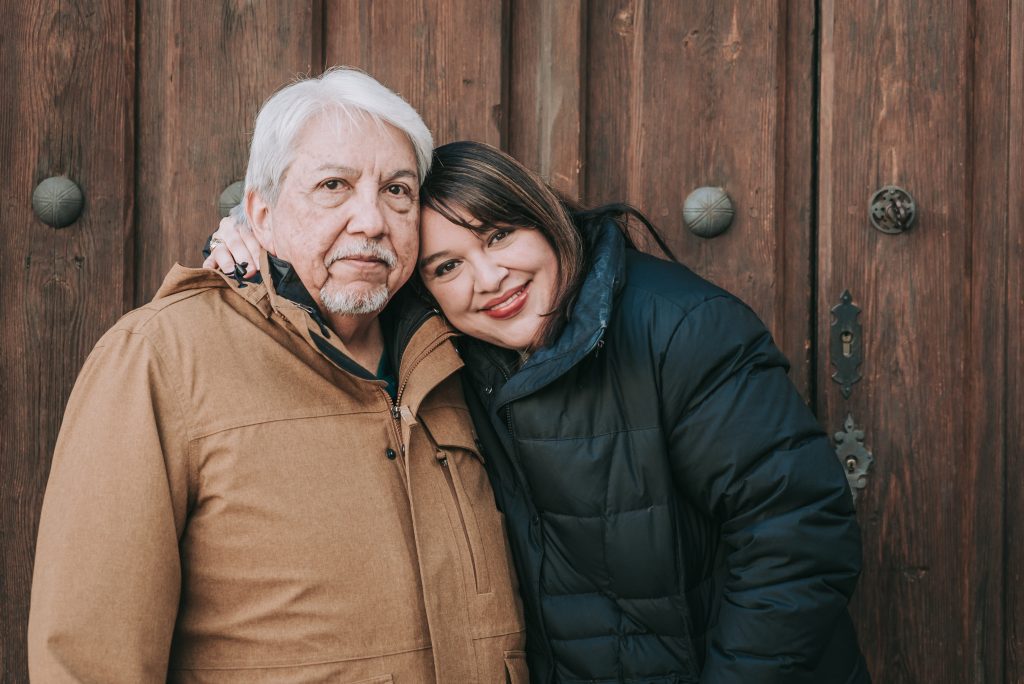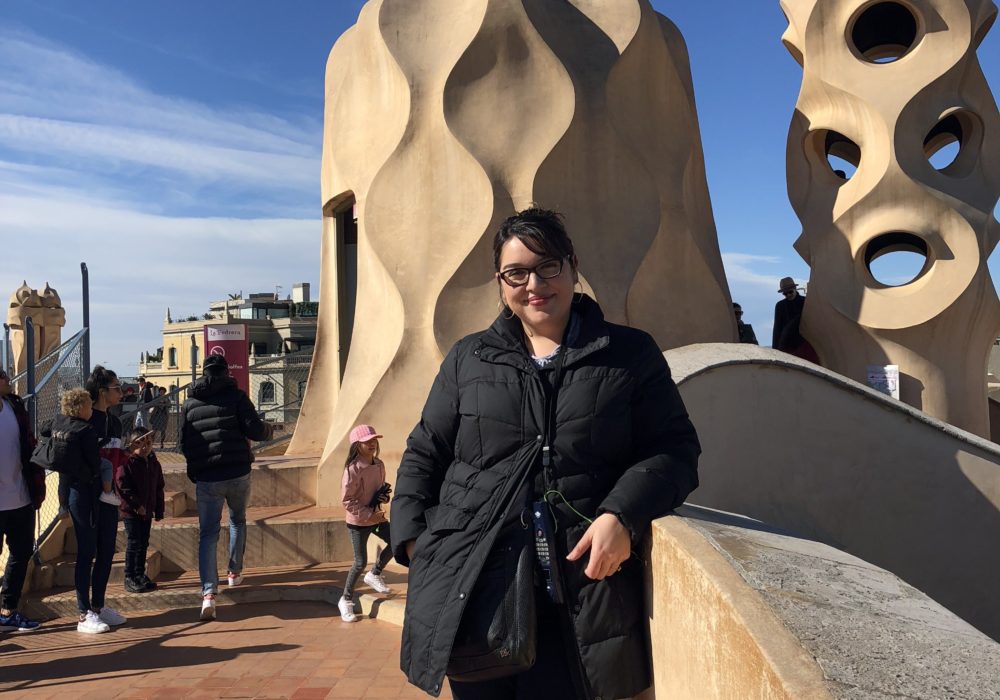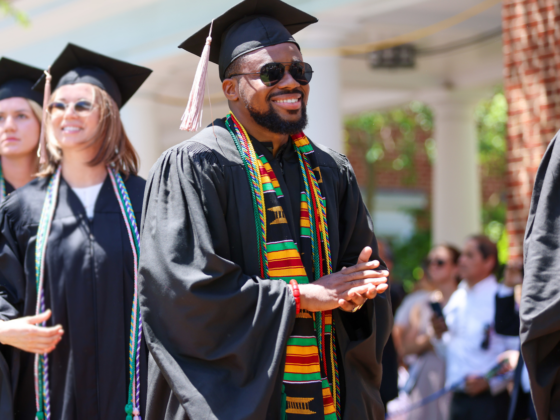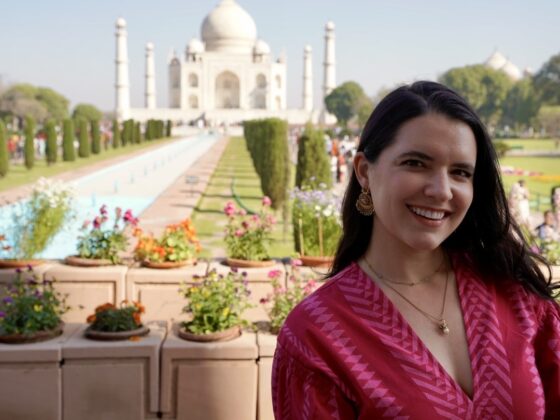Catherine Aranda (Class of 2018) recently participated in “Strategy by Design,” the Darden Worldwide Course to Barcelona, led by Professor Jeanne Liedtka.
In her own words:
If you know me, you know that during my time at Darden, I fell in love with design thinking and strategy. I found mentors in Professors Kristin Behfar and Jeanne Liedtka in my journey of applying human centered design principles and tools to passion projects like Darden’s Resilience Initiative which kicked-off earlier this academic year, in October 2017. At some point in my career, working for a design strategy firm, like IDEO or Peer Insight, would be a “dream” experience. Until then, I’ve immersed myself into books, resources online and Darden classes in entrepreneurship and innovation, including Professor Liedtka’s two-quarter course, “Innovation and Design Experience.”
In March, arriving to Barcelona for the Darden Worldwide Course “Strategy by Design” marked a sort of homecoming for me. On March 19, 2009, in the middle of the night, shoulder to shoulder with college friends, I went to sleep on the floor of the Estacio del Nord train station in Valencia. It was my final adventure in Spain after completing Stanford’s Bing Overseas Studies Program in Madrid. After an entire day and night of reveling in the streets at Valencia’s world-famous festival, Las Fallas, we were pleasantly exhausted and awe-struck awaiting our train and flight home back to California. I remember hugging my Madrileño host father, Jorge, goodbye and trying to conceal my profound sadness about leaving a family and a city that had become home. I had just turned 21 years old, graduation and the job-hunt awaited me in Palo Alto, and I didn’t know when I would return to Spain.
My Stanford experience provided me a robust introduction to Spain’s cultural, economic, and political history. We studied in-depth the dictatorship of Francisco Franco and its deep-rooted effects on modern-day politics. I was most-fascinated by Spain as a plurinational state, with five distinct territorial and ethnolinguistic identities. With excursions to iconic sites like The Alhambra in Grenada and the Great Mosque of Cordoba, I began to take note of the unique characteristics of the five identities: the Basques, Galicians, Andalusians, Valencians, and Catalans.
I was grateful for this context as we began our Darden week in Barcelona. I had been following the recent political unrest in Catalonia, of which Barcelona is the capital. In 2017 regional lawmakers held an independence referendum, a move the Spanish government declared unconstitutional. The political crisis has involved police force, on-going protest demonstrations, and the jailing of several independence leaders. Ex-president of Catalonia, Carles Puigdemont, who fled the country to Belgium after being charged for rebellion, sedition, and misuse of public funds. Just days after I returned from Spain, on March 25th, he was imprisoned by German authorities in response to the issuance of a European Arrest Warrant.
My head spinning with nostalgia from studying abroad in 2009 and the on-going political news, I walked around the city that week first noting the Catalonia flags draped over the balconies and from the windows of homes and businesses, a local symbol of pride and a prominent call for independence.
Our mission for the week was to immerse ourselves in the world of design, and ultimately, consider how design principles inform business strategy. The course focused on three iconic Spanish artists and architects – Pablo Picasso, Salvador Dalí and Antoní Gaudí. Any one of my classmates can now articulate their emotional and instinctual responses to experiencing Picasso’s 1957 series of paintings that reinterpret Diego Velázquez’s Las Meninas or Dalí’s surrealist sculptures, or Gaudi’s world-renowned La Sagrada Familia.
We each carried a personal journal to document our observations and insights after every museum tour or walk through of an architectural feat. Class discussions, hosted at IESE Business School and facilitated by Professor Liedtka, helped us to make sense of each day’s robust and unique experience. In the first days, we established that great design is simple, efficient, and a delicate blend of the familiar and the new. We considered the three artists’ technical expertise, motivations for design, and audiences. Gaudí’s works, which can be found throughout Barcelona, are heavily influenced by nature and religion, with God perhaps as his ultimate critic. Stepping inside’s Dalí’s museum, the repeated motifs of birth and re-birth, sexuality, and distorted perception are unmistakable. Knowing more about his life and artistic development helped to make sense of his works which can be perplexing if not explained by an expert. In Picasso, the co-founder of Cubism, we discovered a man whose natural talent as an adolescent allowed him to design art in a wide-range of styles and mediums. Throughout his repertoire, we noted his love for Spanish nationalism and the exploration of his own identity within the context of his family. From all three artists, we observe boundaryless design, evolving mastery of craft, and a fearless drive to innovate.
After a thought-provoking six days in Barcelona, we came together to reflect on the course takeaways with regards to our individual creativity and ourselves as business leaders and organizational architects. For me, the “Strategy by Design” course reminded me about my love of generating and using creative and unexpected solutions in the workplace as a means of inspiring others to minimize or eliminate constraints; as designers, we are mandated to consider the vast spectrum of “what’s possible.” In the ever-changing competitive market, with advancements in technology and companies entering and exiting the landscape with greater frequency, the businesses we support and lead will need to foster cultures of innovation. As leaders, we must model for our teams how to create and execute business strategy with growth mindsets and acceptance of failure as opportunity.
In the week following the conclusion of the course, I took my father on an adventure throughout Barcelona, Valencia, and Madrid, in his first trip to Spain and his first time traveling internationally since 2006, the year I left home for Stanford.
I was grateful to take him to the same iconic world-renowned sites we had visited in Barcelona and share with him everything I learned. Dad also has a newfound respect for Picasso, but like me, was moved to silence by the genius of Gaudí’s life-long repertoire that culminated in La Sagrada Familia. The use of colors and light throughout the church is truly unparalleled.
I walked around with Dad in the cities that now feel like home, unable to see the buildings and their surroundings without seeing design and experiencing my reaction to it. Is it simple? Efficient? At the intersection of familiar and new? I left Spain, yet again, now 30 years old and once again with graduation and the job-hunt awaiting me in Charlottesville. I’m confident I’ll return to Spain soon and frequently, appreciative of the places and people that have forever transformed my understanding of the world around me.






